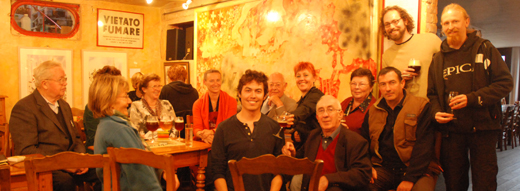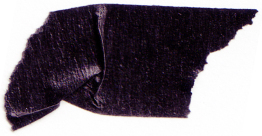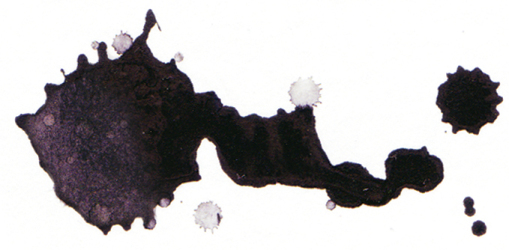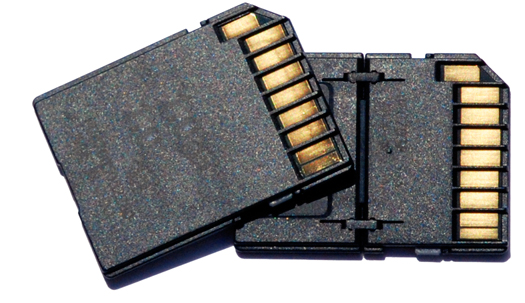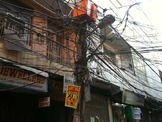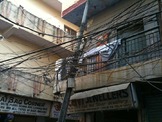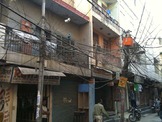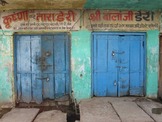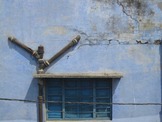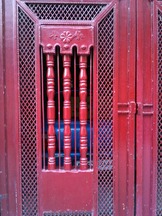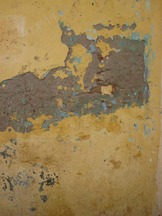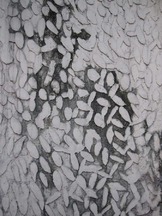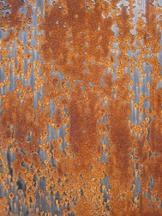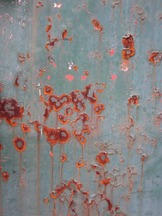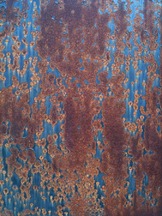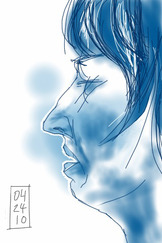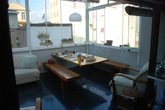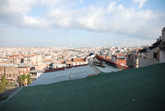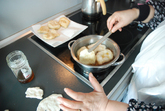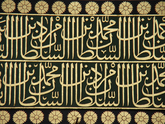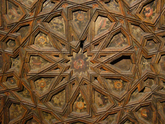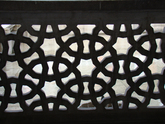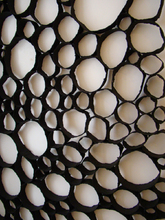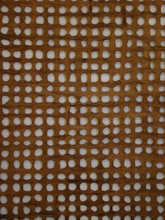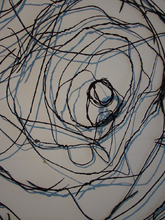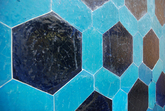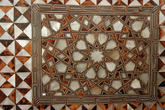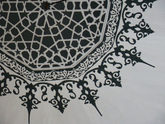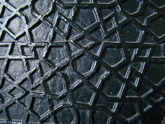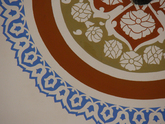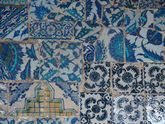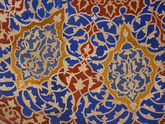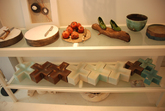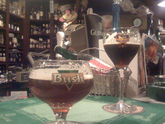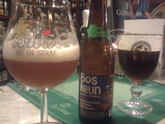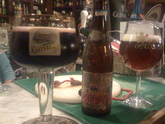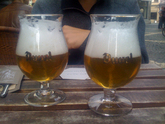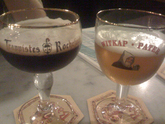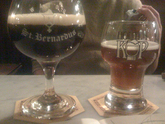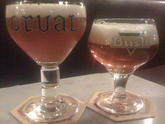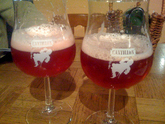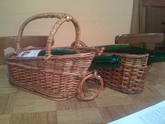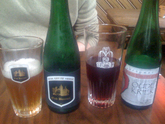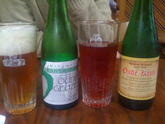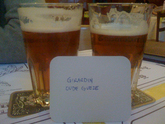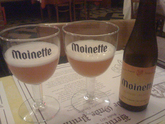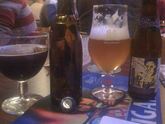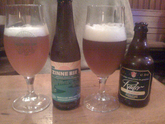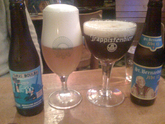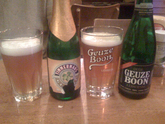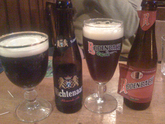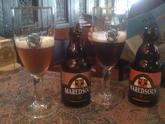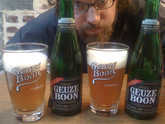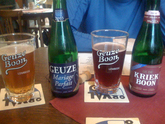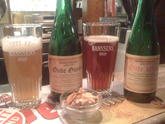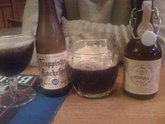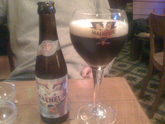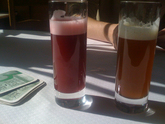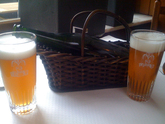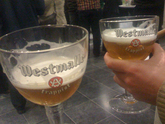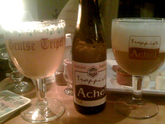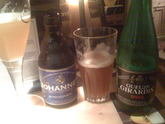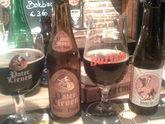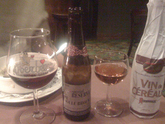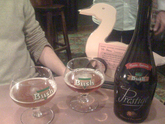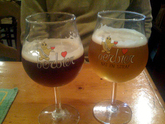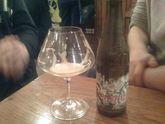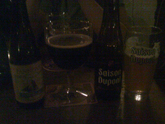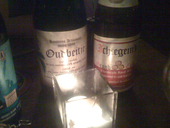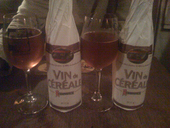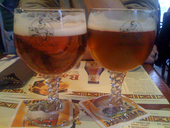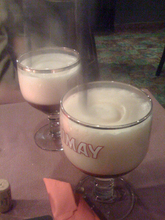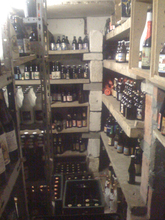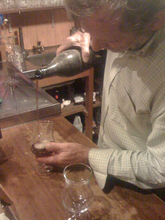the last Wok Man
 Monday, April 26, 2010 at 02:26PM
Monday, April 26, 2010 at 02:26PM Got the inside scoop on the last remaining wok craftsman in Shanghai and paid him a visit (they're all machine made these days). Now I have two hand-hammered carbon steel woks which cost me $15 USD (for both). I got them home and it took me 3 hours to scrub the rust off of them and season them with peanut oil. But now they are black beauties. 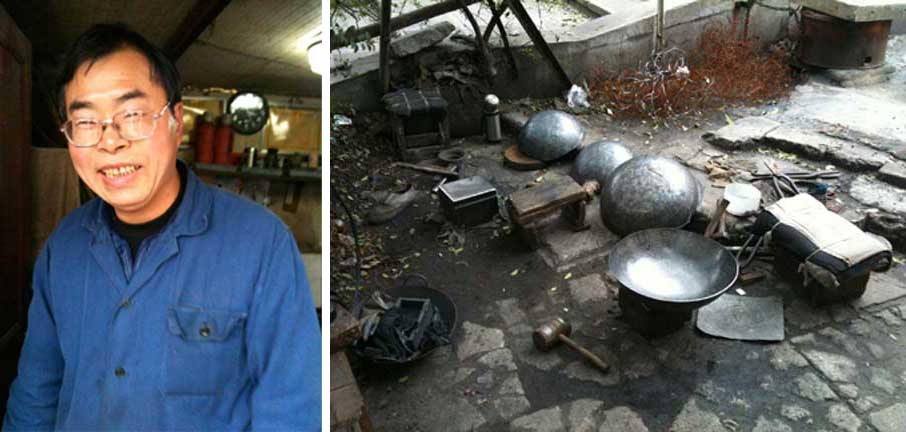
Shanghai grey brick streets
 Sunday, April 4, 2010 at 05:01PM
Sunday, April 4, 2010 at 05:01PM 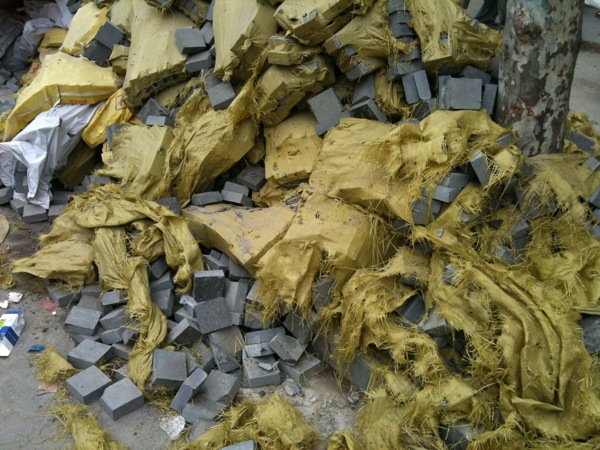
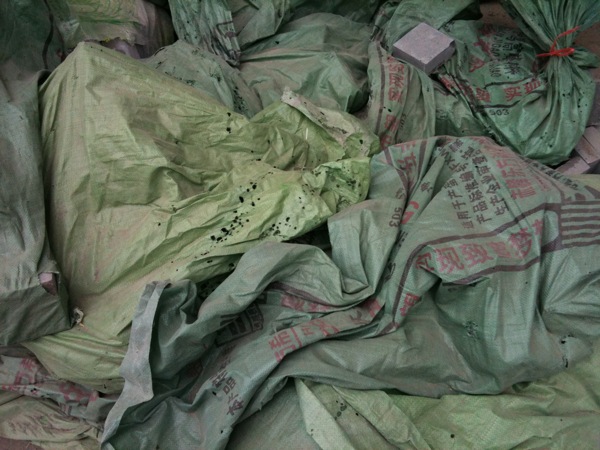
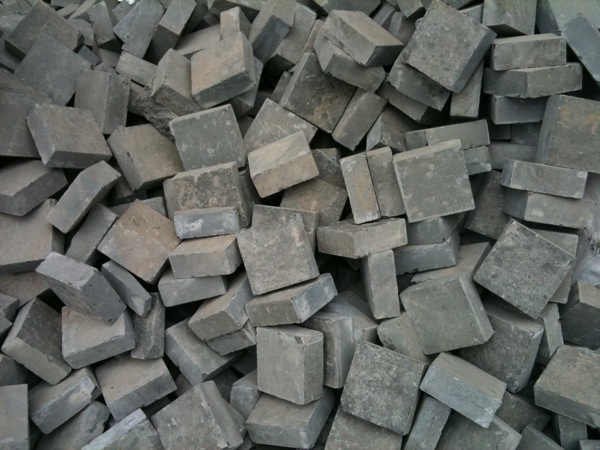

There is, all of a sudden, a metro on Tai kang lu. And the bricks are going in, one by one, to remake the sidewalk. Such a Shanghai sight.
Back in business
 Saturday, April 3, 2010 at 10:12PM
Saturday, April 3, 2010 at 10:12PM 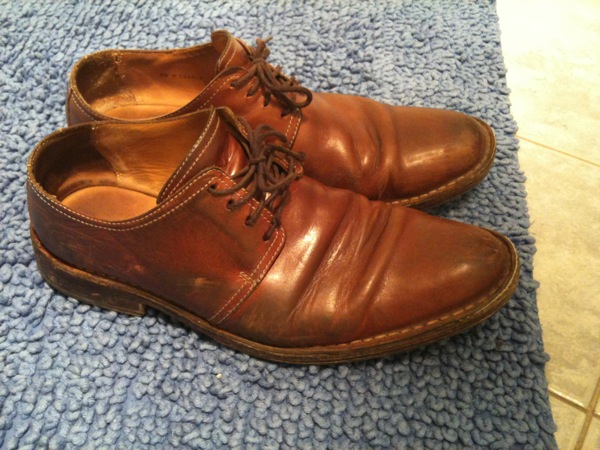
Suddenly, inexplicably, my website became unblocked after more than a year of not being able to access it.
To commemorate this discovery I'm finally getting to use the squarespace iPhone app to mobile post this photo of my beat up, favorite pair of shoes. Because I can.
IST-TAS
 Thursday, November 13, 2008 at 01:14AM
Thursday, November 13, 2008 at 01:14AM 
Gulmira's family is large and lovely and were amazing hosts for us. Her uncle Abdullah hooked us up with our driver Yuriy, who ended up being one of our favorite people. Together we covered over 1500km in Uzbekistan over the course of 10 days. We were sad to say goodbye to him and Gulmira and family.
If you like eating lamb everyday for every meal, come to Uzbekistan and get your fill. I hit my saturation point after about 3 days. Katherine hit hers a bit earlier.
One of the most incredible aspects of traveling through Uzbekistan is the quantity and frequency of elaborately constructed mosques. They are everywhere and boast some amazing tile and brickwork. We blew through about 2000 pictures on the mosques. There are no pictures of them here because I also hit mosque fatigue shortly after I filled my lamb quota. But take it from me, they were impressive.
When we finally arrived back in Tashkent to travel to India we had been to Fergana Valley in the northeast, G'shduvan, Bukhara, Samarkand, Ugurt and Shakrizaabs.
Something Katherine and I couldn't stop laughing about was the currency conversion. In one photo above I'm holding about 5,000,000 Uzbek Som in 500 bills which roughly equals $100 USD. Everytime we went to a bank to withdraw cash we'd walk out with a grocery bag full of money. We felt like we just robbed the place. Everytime we had to pay for something I pulled out a fist full of money from our bag and began the 10 minute process of triple counting the amount. We were all laughing the whole time. Consumerism became entertainment because we literally had no idea how much money we had at any one time.
Kutch, Gujarat
 Thursday, November 6, 2008 at 02:30PM
Thursday, November 6, 2008 at 02:30PM 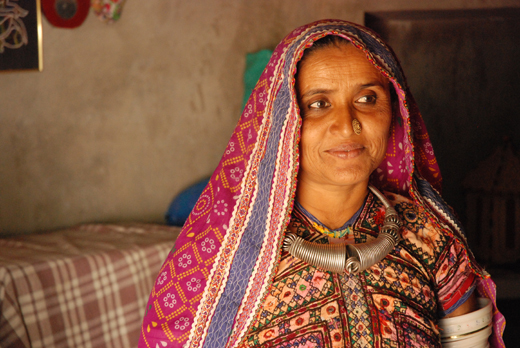
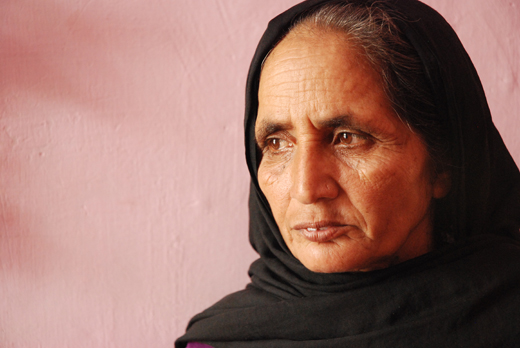
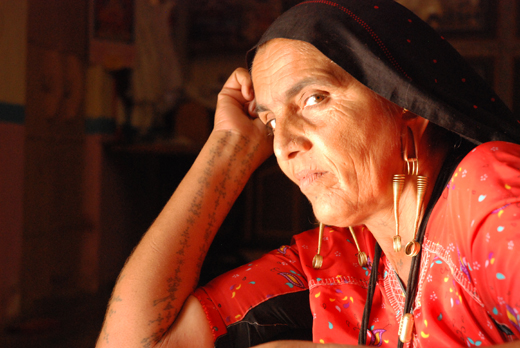
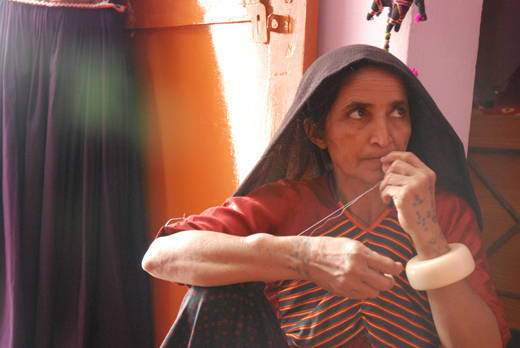
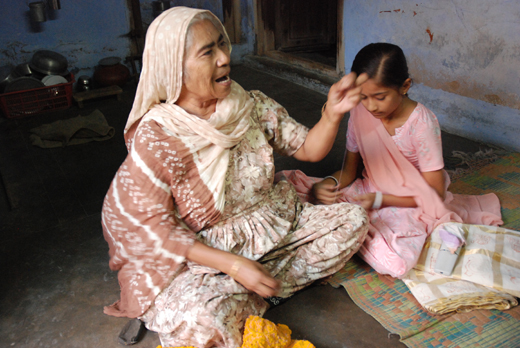
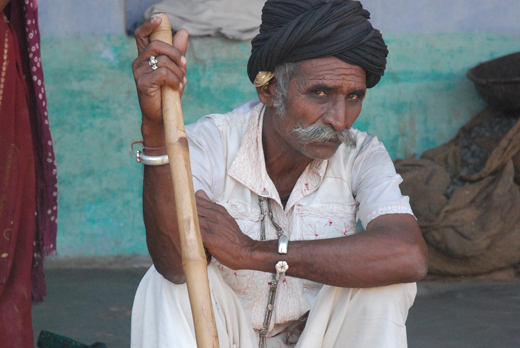
Kutchis are a hard working people. They're craftspeople. Embroidery, hand weaving, block printing to name just a few of the textile crafts. The artisans that we met were as beautiful and textured as their work. The work reflects, in narrative form or motif form, their shared existence in what is essentially a harsh desert environment. The work is extremely colorful, compositionally dense and patterning is a traditional device to preserve revered designs.
The craft world in Kutch is a difficult place to be right now. Depending on who you ask, it's either dying or going through a renaissance. It used to be that women would embroider garments and quilts as dowry gifts and they would do it in their spare time often taking 6 months or more to complete one piece. Over generations these hand work crafts stopped being made primarily as gifts between families and started to be semi-mass produced for commercial interests inside India and beyond. Today, a lot of Kutch crafts are recognized as styles such as Rabari or Ahir, which are actually the names of the tribes/communities that practice these types of embroidery. Accordingly, the quality of work has seen a decline in recent years as artisans are being asked to produce more and more. When we looked at old embroidery (say 80 years old) we saw what our friend described as the 'joy' because nothing was perfect and the design happened during the process rather than before. The designs were often made up as they went along resulting in really cool and, to my eye, really bizarre colors and compositions. The aesthetic is entirely unique to this region.
It may be for this reason that, aside from the rapidly growing domestic market for Kutch craft work, there is increased export market interest in recontextualizing these crafts into new products. Which means that there are lots of different organizations in Kutch trying to simultaneously preserve and grow the craft capabilities in the various villages in a sustainable and responsible way. But many villagers are disconnected from the end consumers of their work and we couldn't tell if any of the artisans wages had gone up proportionally with the demand. We did see, in some cases, artisans now being able to do craft work as their job, rather than fitting it in between their other daily work.
Ultimately I found myself drawn to the individuals we met. Their faces and hands spelled it all out. Their bungas were incredibly designed and lovingly maintained and there was a spirit that poured out of every inch of every place. I couldn't help but think that this way of life is slowly disappearing because of, and in spite of, the work still being done by many in these villages.
Like everything else, it comes down to design. Today's craft work does seem to have lost some of that joy and experimentation in design, and this seems to be the biggest conundrum for anyone involved in Kutch craft, especially those trying to help the artisans create value for themselves.
TAS - DEL
 Thursday, November 6, 2008 at 02:22PM
Thursday, November 6, 2008 at 02:22PM 
We're here to see how hand work is done and I'm happy to report that it's still done by hand. Any first year art school student should visit the villages in Kutch for a lesson in humility. I'm not exaggerating when I say that, in two days, I've seen techniques I can't wrap my mind around. Double Ikat is the name of a technique that's 900 years old and I literally can't conceive how the process works. I'm watching them do it and I still have no idea.
If you're into sensory experiences, India is the place for you. Everything looks, tastes, smells and feels entirely unlike anything I've experienced before. It's as uncomfortable as everyone says but it's also worth it.
AMS - IST
 Friday, October 24, 2008 at 12:50PM
Friday, October 24, 2008 at 12:50PM 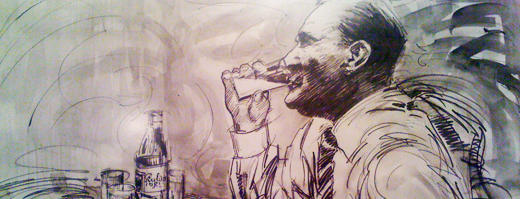
We kind of eased our way into the developing world by dropping into Istanbul. It's many cities in one but the disparity between high and low living is very pronounced. You can see the city pulling itself towards modern Europe but you can't help but feel its ancient baggage in the streets, in the faces, in the sounds and smells. It's raw and beautiful. Ataturk was a man divided.
We rented this cool apartment in Beyoglu, an 'up and coming' neighborhood (N.B. I'll never stay in a hotel ever again. Craig's list apartment rentals is the way to go. It's so much cheaper than hotels and you actually feel like you're IN the place you're visiting) We couldn't figure out why it came with ear plugs until the first night when a muslim rap dance party across the alley started and didn't stop for 3 days - that plus the call to prayer made us feel super local. The 'housekeeper/mother' of the house made us incredible breakfasts with our rooftop view of the city. She kept talking and laughing even though we had no idea what she was saying. But homemade donuts and turkish coffee for breakfast!
The recap of Istanbul looks like this. We got lost a lot. We had an incredible meal at a century old converted school house with the manager who kept us company while we got smashed on life changing cocktails. Jazzy hip hop band called I Led Three Lives at Babylon, an intimate little music club. Meze. Sultanahmet, mosques and the mazes of the Harem. Bazaars and spices and doner kebab. And lots of pictures of textiles and tiles. A primary goal was inspiration for patterns and palettes.
The only thing I love more than looking through other people's sketchbooks is looking through other people's workshops. We were in a gallery when we met this sculptor, who was friends with the owner and whose workshop was upstairs.
nat en straf
 Wednesday, September 24, 2008 at 02:04AM
Wednesday, September 24, 2008 at 02:04AM 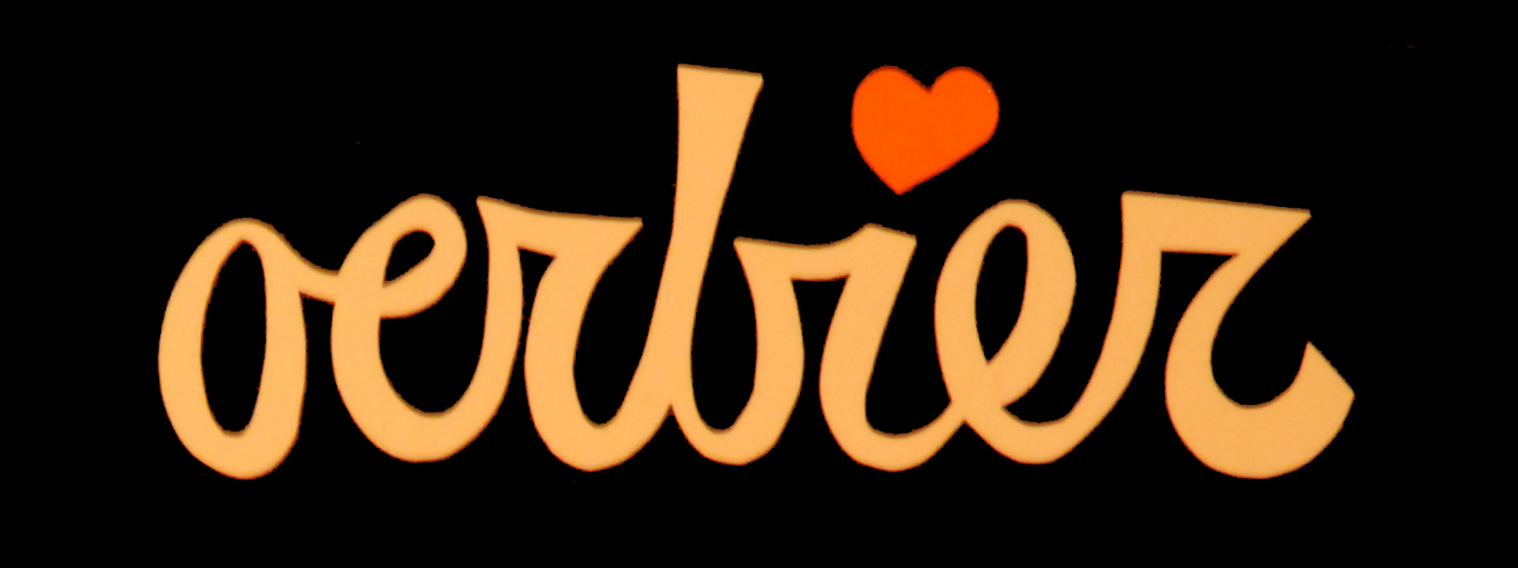
It was like this. (Left)Chris, (Right)Zander
Bicycling through Belgium turned out to be one of the best ideas I've ever had. For the most part we explored lambic country - East Flanders and just south of Brussels. We really tried to not duplicate any beers but it happened once or twice. Gueuze turned out to be a new favorite of mine - it smells like a junkyard but tastes like summer. It's really sour so it gets the glands going.
We got caught in a major rain storm and got completely lost on our way to De Gans, a small little mom and pop bar in Huise about 30 km from Ghent. We thought we were about a half hour away when we asked a kid for directions. We were huddled under an overpass and he informed us that we weren't even on the right side of the map. It was disheartening so we turned around and went back to Ghent determined to get there. Later Zander, defying defeat, rallied and we took two trains and a "cab" (which was a girl and her girlfriend in her mom's car) to the front door of De Gans. The girls laughed as they dropped us off at a small house with the only light on in the countryside. But inside we were redeemed and rewarded with a fireplace, a hot Flemish meal, crepes with brandy, extremely old and special beers and a peek inside a true collector's beer cellar.
We had a 28 year old Liefman's lambic that tasted like port followed by a limited edition Bush and Rodenbach Vin du Cereal. The last and most unique was when the proprietor put two hot iron pokers in the fire and used them to burn the head of two glasses of Chimay. The sugar in the beer foam carmalized and the steam smelled like Chimay syrup. It was a pilgrimage we'd both make again in a heartbeat.
De Dolle Browerij
 Tuesday, September 23, 2008 at 07:02AM
Tuesday, September 23, 2008 at 07:02AM 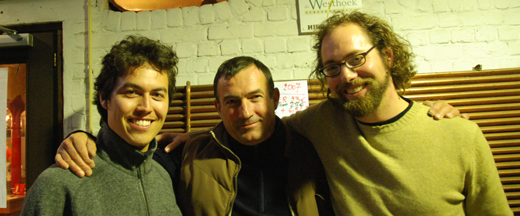
The last stop for us was to my favorite brewery (I think Zander's too) in Esen, Belgium. We first tried their beers back in the Blue Tusk days and we've both wanted to visit the brewery since about 1996. Again, our journey there from Bruges was ridiculous. We took a train to a miniscule village and somehow a diehard Guns and Roses fan offered to drive us the rest of the way. He made us listen to the bootleg Chinese Democracy album in his car but only after showing us his Appetite For Destruction full back tattoo.
Anyway, we made it and spent the afternoon hours talking with Chris, the brewer, his wife and their friends. He's an artist and a really nice guy. He rustled up a 16 year old Stille Nacht for us, which was probably the highlight of the trip. Even his employees were impressed that two American guys got an aged Stille Nacht. It was exceptionally smooth and the flavor was so rich. Until you've tasted a really good aged beer, it doesn't really make sense how a beer can get better in the bottle. This one did and we savored it.
You know how when you're getting your drunk on and it's early and everything is golden and happy and the future seems bright and you love everyone? That's what it was like at De Dolle with Chris and family.
